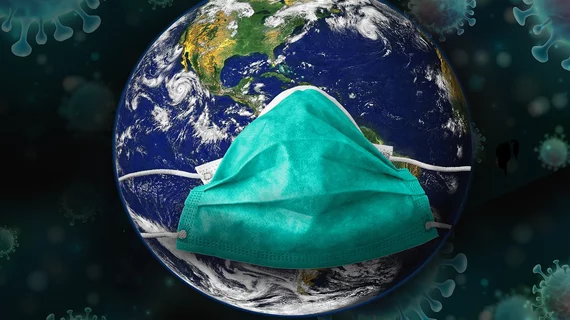World Health Organization urges against using chest imaging to diagnose COVID-19
Add the World Health Organization to the growing list of experts advocating against the use of chest imaging to diagnose patients with COVID-19 in most cases.
The special agency of the United Nations just released its own set of recommendations on radiology’s role in assessing and managing those with the novel coronavirus. WHO does not endorse chest imaging for diagnosing the disease—unless lab tests are unavailable, or results are delayed—but noted that scans can be a useful tool for managing COVID patients.
WHO said several countries have asked for guidance in the use of chest imaging during the pandemic, with the agency publishing the results of its literature review Thursday in Radiology. A recent global survey conducted by the International Society of Radiology found “important variations in imaging practices related to COVID-19” that needed to be addressed, the authors noted.
“The purpose of the guide is to support WHO member states in their response to the COVID-19 pandemic by providing up-to-date guidance on use of chest imaging in adult patients with suspected or confirmed COVID-19, including chest radiography, computed tomography and lung ultrasound,” Elie Akl, MD, PhD, a general internist, epidemiologist, and professor of medicine at the American University of Beirut, Lebanon, and colleagues wrote July 30.
Their analysis covers the care pathway from outpatient facility or entry into the hospital all the way to home discharge. Akl et al. offered up seven recommendations to radiologists across the globe, with the first three covering diagnosis and four more relating to patient management.
1) For asymptomatic patients with COVID-19, WHO suggests not using chest imaging for diagnosis.
2) For symptomatic patients with suspected COVID-19, WHO suggests not using chest imaging for the diagnostic workup when reverse-transcription polymerase chain reaction testing is available with timely results.
3) For symptomatic patients with suspected COVID-19, WHO suggests using chest imaging for the diagnostic workup of the disease when: RT-PCR testing is not available; lab testing is available but results are delayed; or the initial RT-PCR test came up negative, but with high clinical suspicion of COVID-19.
4) For patients with suspected or confirmed COVID-19—who are not currently hospitalized and have mild symptoms—WHO suggests using chest imaging, alongside clinical and lab assessments, to decide on hospital admission or home discharge.
5) For patients with suspected or confirmed COVID-19—not hospitalized, but with moderate to severe symptoms—WHO suggests using chest imaging. That should be done addition to clinical and lab assessment to help decide on regular ward admission versus sending patients to the intensive care unit.
6) For patients with suspected or confirmed COVID-19—hospitalized and with moderate to severe symptoms—WHO suggests using chest imaging, in addition to clinical and lab assessment to inform therapeutic management.
7) For hospitalized patients with COVID-19 whose symptoms have resolved, WHO suggests not using chest imaging in addition to clinical or lab assessments to inform the discharge decision.
World Health Organization experts compiled the guide over the course of two months, reviewing 28 studies that met its eligibility criteria. It also supplemented the work with a survey of stakeholders on the use of various chest imaging modalities during the pandemic. WHO, however, did not address differences in specificity between radiography, CT and ultrasound.
“While there is accumulating evidence about typical findings with each imaging modality, evidence about comparative diagnostic and prognostic value of the different modalities is still lacking,” the team wrote. “The experience indicates that in most cases chest radiography with portable equipment can provide the information needed at the point of care. In addition to limiting patient transfers it gives the possibility of adapting procedures to reduce staff exposure and increase operational efficiencies.”
WHO joins a growing list of organizations urging against using chest imaging as a frontline tool to diagnose COVID-19 that also includes the U.S. CDC, American College of Radiology, and its U.K. counterpart the Royal College of Radiology. Meanwhile, clinicians in China, Russia and elsewhere have deployed CT to diagnose the disease. Experts from the latter defended the practice recently in a news release from the Moscow Center of Diagnostics & Telemedicine, with the government agency estimating that it had performed more than 175,000 CTs on COVID patients as of July 28.
Read more of the World Health Organization’s new guidance in Radiology here.

